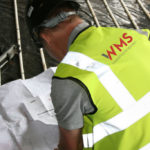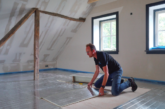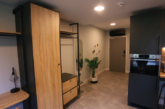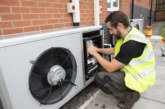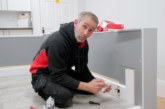With updated regs for new build heating systems now in force, Joanna Crown, Marketing Director at WMS, says it’s never been more important for new build heating systems to work in harmony.
The low water temperature update to the Building Regulations and Part L are now in force, so the time is now for every newly built home to prove a 31% reduction in CO2, compared to previous standards, and demonstrate a maximum flow temperature of 55°C.
It is likely heat pumps will become the primary heating technology for new homes. For these renewable heat sources to work most efficiently they need to run between 35-45°C. By design, hydronic (water based) underfloor heating can help achieve this, but, says Joanna Crown, it’s crucial for suppliers to view the entire new build heating system design from a holistic point of view.
“While heat pumps and underfloor heating are the perfect zero-carbon pairing, precision system design and installation is vital to ensure the system reaches the required efficiency. If this is not achieved, energy bills will undoubtedly increase”, explains Jo. “This is a risk housebuilders simply cannot take, especially as the National Energy Action revealed that the energy crisis currently means 6.5 million UK households are in fuel poverty. Then in October 2022 energy bills are predicted to rise to an average of £2,800 a year, an increase of over 40%.
“To avoid any issues at the installation phase and for homeowners in the future, it’s crucial for housebuilders to work with specialist contractors who can provide the expertise and products to help them meet the new standards. Suppliers must also be prepared to collaborate to ensure the most efficient new build heating solution.
“Working together to accurately calculate heat loss will not only lead to the correct specification of all equipment, but significantly a seamless design and installation and operation of the finished system. Removing any guess work also reduces the risk of heat pumps being unnecessarily oversized, something which can affect both upfront capital and running costs for the homeowner.
“Specialist contractors also have a clear understanding around the need to educate the homebuyers/occupiers as we fundamentally change the way we heat our homes. Moving into a home with a low temperature system require a mindset shift as the system will be more efficient when left running at lower temperatures for longer. As such, it’s critical to provide homeowners with advice on how to effectively heat their home as they make the move from traditional systems.”
“Collaboration is key as we work together to take on the new low temperature challenge together as an industry and expertly guide housebuilders as they enter this period of change.”

